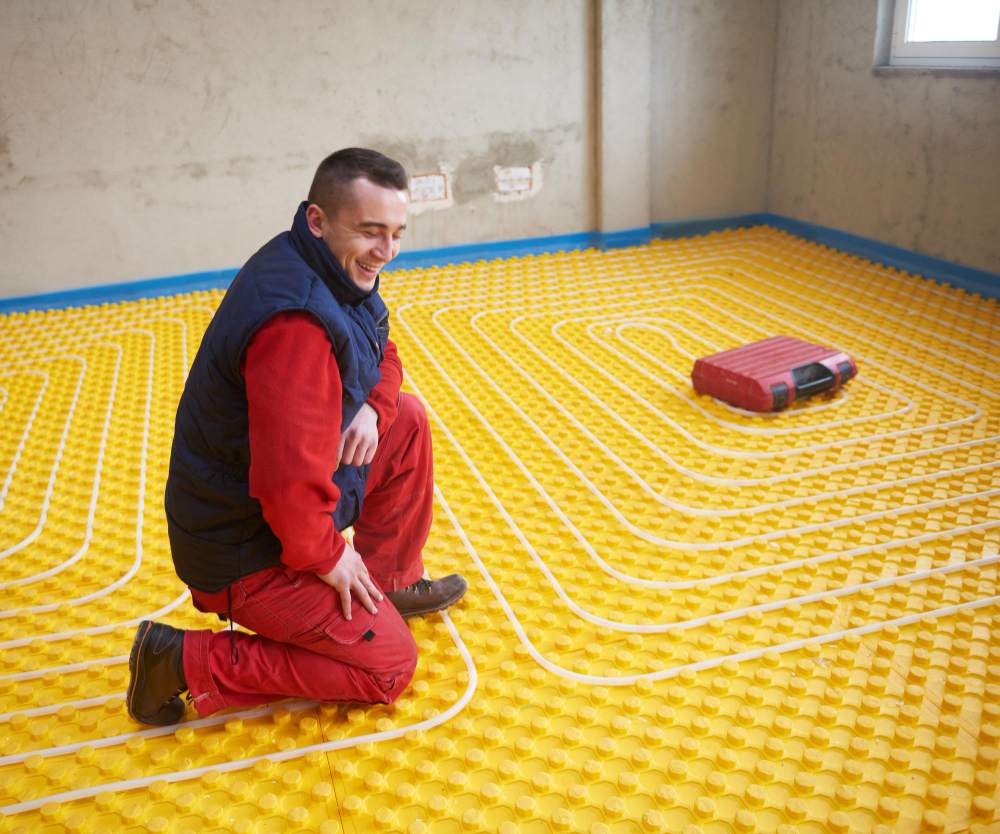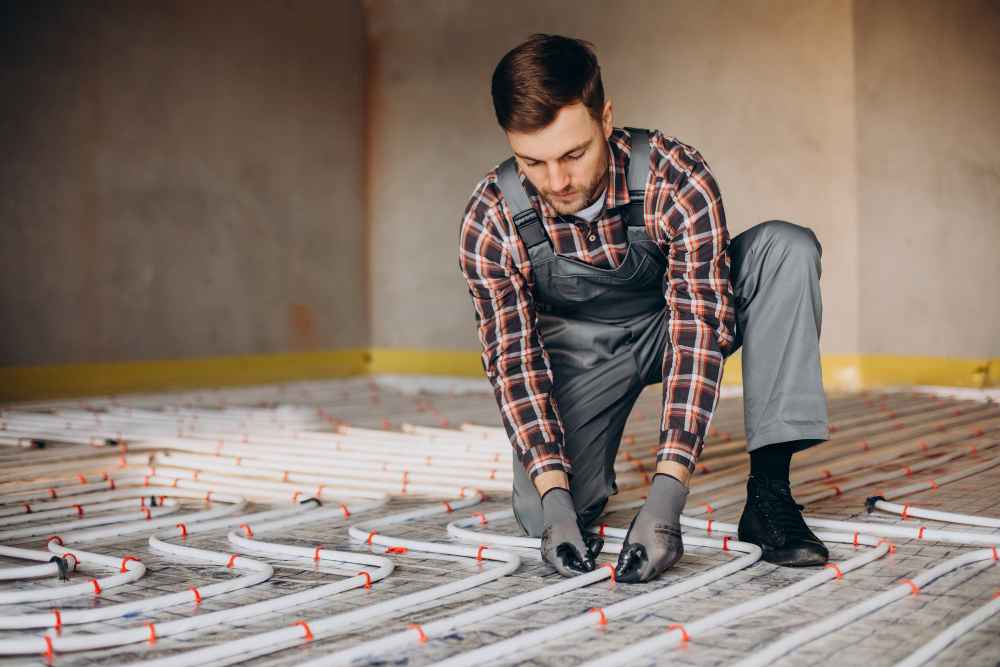
Underfloor heating is one of the most clean and smart ways to heat your property efficiently. This system works on the principle of radiant heat technology to warm the floors by radiating heat in the upward direction. In this way, it enhances the energy efficiency of your property and reduces the bill costs significantly. However, you need to invest a large amount of money in the beginning to get this system installed at your property and upgrade its energy profile.
This guide provides you with information regarding the types, benefits, and drawbacks of underfloor heating systems, helping you make a well-informed choice.
There are two types of underfloor heating systems
Electric underfloor heating systems, also known as dry underfloor heating systems, use a network of electric heating mats or wires. The electric cables are installed beneath the floor surface in a pre-determined pattern that allows even heat distribution. Heating mats have embedded heating cables that can be installed easily by unrolling and securing them on the floor.
The wet underfloor heating system is also referred to as a water-based underfloor heating system and consists of a boiler, heat pump, and a network of pipes. The boiler works as a heating source to warm the water, which then circulates through the pipes and radiates its warmth to heat the room efficiently.
The installation of an underfloor heating system is a good option as it provides several benefits:
No matter which type of flooring is present on your property, you can get an underfloor heating system installed. It is because this system works well with almost all types of flooring material, including carpet, laminate, stone, tile, or wood, etc and radiates heat efficiently to warm up the entire room evenly.
Underfloor heating systems can be easily installed in new-build properties or as part of retrofitting projects during renovation and refurbishment of properties to upgrade them. They require less time to install and can be operational soon after the installation is completed.

Both electric and wet underfloor heating systems heat the room efficiently, maintaining a consistent feeling of warmth throughout the space. You can set a certain temperature based on the floor finish and heating requirements to warm the area. There are no cold spots or excessively heated stuffed spots on the floors. This energy-efficient feature of these systems leads to reduced energy bill costs.
Once the underfloor heating system gets installed, it requires minimum maintenance, such as electric underfloor heating system does not need to be serviced regularly, and the wet underfloor heating system also requires occasional review to ensure everything operates properly.
When a modern, technologically advanced, and energy-efficient heating system is installed in your property, the monetary value of your property ultimately gets enhanced. This system not only upgrades the energy profile of your property but also provides a luxurious feel due to the incorporation of a high-tech heating system. Therefore, your property becomes a source of attraction for potential buyers.
The underfloor heating system is installed beneath the floor, and there is no extensive wiring network or other utilities, which may pose a safety risk to the residents or visitors on your property. Moreover, there is no risk of extensively heated spots on the floor that can be unsafe to touch. The radiant heat technology used in these systems also contributes to improving the overall indoor air quality by circulating fresh and oxygen-rich air in the surroundings.
Underfloor heating is a smart system that does not occupy much space on your property and gives you the freedom to design your space according to your choice and preferences. This system is installed underneath the flooring and presents a space-efficient design that does not occupy the walls and floor space.

If you plan to retrofit underfloor heating systems while renovating your property, floor height can be an issue. It is not a good idea to increase the floor height after the installation of the heating system, whereas the ceiling height is fixed. This will then negatively impact the overall theme and interior design of your property, compromising its aesthetic appeal.
When deciding on furniture placement in different rooms of your property, you need to plan carefully. No furniture item or appliance should be placed above the heating source. The placement of furniture items over the heating source will interfere with its performance, restricting the flow of air and causing thermal blocking, which results in the system’s inefficient workings.
A huge amount of upfront cost is associated with purchasing and getting this system installed at your property, for which you need to make a significant investment in the start. The total amount of required cost is based on the cost to purchase the system, the size of your room, installation charges, and the price to be paid to the installers.
You may need to make some other arrangements, such as connecting the system to the main power supply, which will also require some cost to make the system fully functional.
Underfloor heating systems have their own benefits and drawbacks, but their advantages outweigh their disadvantages. The upfront cost of purchasing and installing an underfloor heating system seems to be higher, but this cost will be paid off in the long run with significant savings on energy bills. This makes this system worth investing in and installing at your residential or commercial property to make it energy efficient.